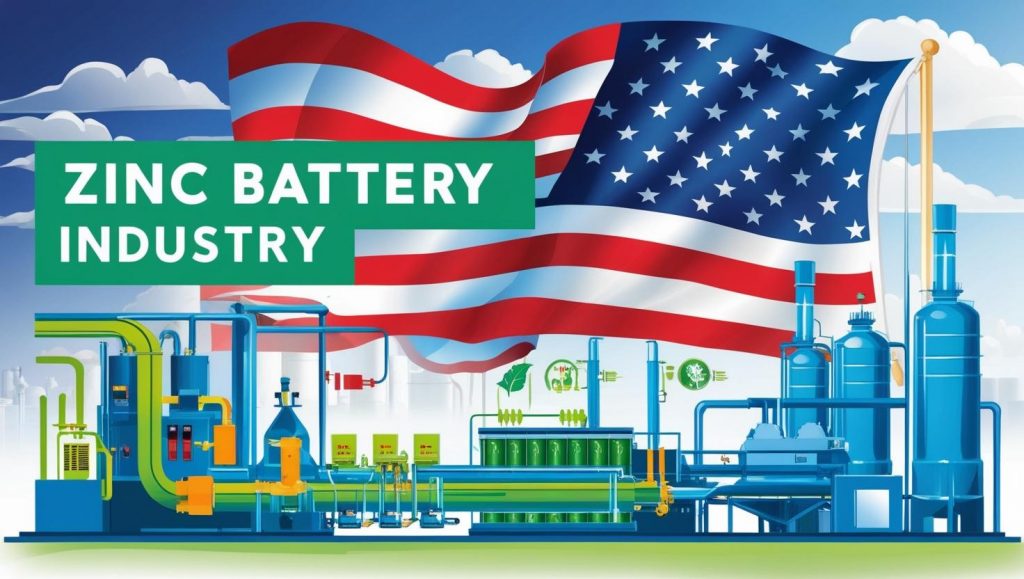The zinc battery market once a niche segment has rapidly gained prominence due to its promise of affordability, safety, and environmental sustainability. As the world moves toward energy diversification and clean storage technologies, zinc-based chemistries such as zinc-air, zinc-ion, zinc-bromine, and nickel-zinc have emerged as strong contenders to lithium-ion batteries.
However, the implementation of Trump-era tariffs on imports of raw materials, battery components, and electronics—particularly from China—triggered disruptions across the zinc battery supply chain. These tariffs affected pricing, sourcing strategies, and the pace of innovation. As the dust settles, the industry is undergoing a strategic recalibration, and new opportunities are emerging in the post-tariff landscape.
Future Outlook and Opportunities
Despite lingering impacts from Trump-era tariffs, the zinc battery market is positioned for strong, strategic growth. As global energy systems shift toward decentralization and decarbonization, zinc-based storage solutions offer compelling value propositions:
- Safety and non-flammability
- Cost-effective scalability
- Material abundance and recyclability
With favorable clean energy policies, technological breakthroughs, and regional diversification strategies, the market is expected to outpace early challenges and become a cornerstone in the global battery landscape by 2029.
Book Your “Trump Tariff Threat Assessment”
https://www.marketsandmarkets.com/pdfdownloadNew.asp?id=171978019
Market Shifts: How Tariffs Reshaped the Zinc Battery Ecosystem
Cost Pressure and Supply Chain Realignment
The introduction of tariffs on metals and electronics significantly increased input costs for U.S.-based zinc battery manufacturers. Since a large portion of battery components—including zinc anodes, electrolytes, and casing materials—were sourced from tariff-affected countries, many startups and mid-tier firms struggled with sudden cost spikes and sourcing bottlenecks.
In response, companies began diversifying their supplier base and relocating portions of their manufacturing supply chains to non-tariff countries such as Mexico, Canada, South Korea, and Vietnam. This shift not only mitigated tariff impacts but also set the stage for a more resilient and regionalized battery production ecosystem.
Acceleration of Domestic Manufacturing
Tariff pressure coincided with growing federal support for domestic clean energy infrastructure. As a result, the zinc battery market saw increased interest in onshoring production facilities, tapping into federal and state incentives under the Inflation Reduction Act (IRA) and Department of Energy programs.
Domestic production is now seen as a competitive advantage—not only to avoid tariffs but to gain greater control over quality, innovation, and regulatory compliance.
Strategic Global Partnerships
U.S. companies began forging strategic partnerships with non-Chinese technology providers and material suppliers to ensure stable access to zinc battery inputs. Some firms entered joint ventures with Canadian and European firms focused on battery innovation and sustainable mining practices, reducing dependence on geopolitically sensitive trade routes.
Strategic Moves Driving the Future of the Zinc Battery Market
Innovation in Rechargeable Zinc Chemistries
Recent breakthroughs in zinc-ion and zinc-air rechargeable batteries have addressed key limitations related to energy density and cycle life. These innovations are making zinc-based technologies more viable for grid storage, EVs, and portable power applications.
Investment in Scalable Manufacturing
Several U.S. firms are investing in gigafactory-scale production of zinc batteries, supported by public-private partnerships. These facilities aim to produce batteries at a commercial scale while reducing reliance on volatile international inputs.
Policy-Driven Market Expansion
The focus on energy security and clean technology self-reliance has amplified demand for zinc-based storage solutions in the utility, defense, and medical sectors. Government-led procurements and pilot projects are setting the stage for widespread adoption.
Mergers, Acquisitions, and Licensing
To expand capabilities and access proprietary chemistries, many zinc battery firms are engaging in M&A activity or technology licensing agreements, consolidating the industry and enhancing value chain integration.
Outlook: A Resilient Growth Path
Despite the short-term disruption caused by tariffs, the zinc battery market is now better positioned for long-term stability and growth. A few defining trends include:
- Rising adoption in renewable integration and microgrids
- Expansion of domestic and allied supply chains
- Emergence of zinc as a strategic element in decarbonization efforts
- Policy tailwinds encouraging alternatives to lithium-ion
The global zinc battery market is projected to grow at a CAGR of over 25% through 2029, with North America and Europe emerging as critical innovation and deployment hubs.

